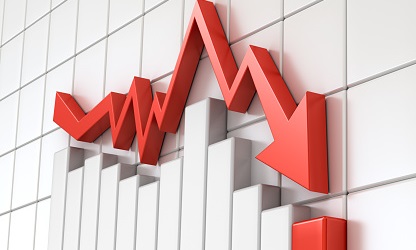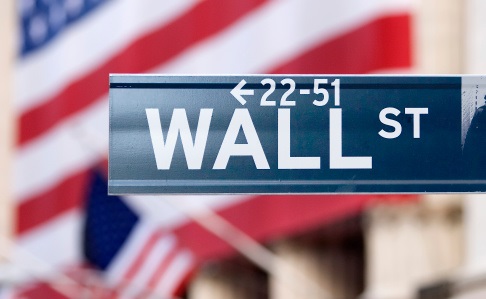Yesterday’s US April Consumer Price Inflation report came in significantly hotter than anticipated; headline inflation was up 4.2% YoY, above market expectations for a 3.6% YoY reading. The YoY rate of inflation is getting an arbitrary boost from weakness in prices, particularly in energy prices, seen this time last year. However, the MoM change in consumer prices in the US was alarmingly high, coming in at 0.8% versus expectations for 0.2%. Core CPI was up 0.9% MoM. This MoM rate of price increase in Core CPI was the highest since the 1980s. Analysts pointed out that much of this was a result of temporary factors; auto-part prices shot up 10% on the month (as people spent stimulus cheques on their cars?) and contributed to one third of the MoM spike in Core CPI. Prices in other industries that are the biggest beneficiaries of economic reopening also saw prices surge and contribute to the strong MoM rate of inflation, something which is likely to persist for a few more months but meet the Fed’s definition as transitory inflation. However, stimulus cheques and reopening aside, broad price pressures did seem to rise in April, and markets did not like it.
Global equities seem to have interpreted the latest US CPI data as bringing forward the Fed’s timeline for policy tightening, as more market participants were persuaded around to the view that the Fed is underestimating inflationary pressures and may have to act sooner than they are currently forecasting. The S&P 500 was down over 2.0% in yesterday’s US session, dropping to the mid-4000s, but trades roughly flat in pre-market futures trade and is still above 4050. Asia equities were also lower across the board, as are European bourses this morning, with the Stoxx 600 down more than 1.0% as it plays catch up to the extension of losses in US equities after the close of European markets yesterday.
Reassurance from various Fed officials in wake of the data, including from FOMC Vice Chair Clarida who stuck to the Fed’s usual line that it is willing to look through inflation that it sees as transitory, seems to have broadly failed to ease concerns that the Fed will tighten monetary policy earlier than its current guidance suggests; money markets are now pricing a hike by the end of 2022. As a result, US government bond yields have been pushing higher; US 10-year TIPS yields (the inflation expectation adjusted yields on the 10-year) are up about 8bps since the CPI came out to around -0.85%, whilst 10-year nominal yields are up a similar margin. 10-year break-even inflation expectations are currently stable around the mid-2.50s%, suggesting that those who wanted to bid up inflation expectations have been tempered by those expecting earlier than expected tightening from the Fed to cool inflationary pressures. European bond yields are higher in sympathy, though inflation expectations on the continent are lower amid the gentler fiscal response to the Covid-19 recession so it seems the upside risk to European government bond yields is much less than in the US. Moreover, the ECB has already expressed interest in keeping bond yields at accommodative levels and is taking a much more activist stance on this relative to the Fed.
In terms of commodities, the sharp rise in the YoY and MoM rate of Consumer Price Inflation in the US has not had a positive influence on gold, even though the asset is seen as a hedge against inflation. Rather, gold is taking its cue from higher real yields and the aforementioned stronger dollar and spot prices have edged lower to find support just above $1810 from its pre-CPI levels of around $1840. Silver is equally subdued, and spot prices today fell back under the $27.00 mark having hit highs just under $27.90 at the start of the week. Industrial metal prices have also backed off amid the stronger buck and yield environment; US copper prices are down about 1.8% and iron ore prices tanked 9.5% in China last night. Strategists at Huatai futures are maintaining their recommendation to buy dips in copper, however, reasoning that “the current orientation of loose monetary policy is not expected to change immediately… (and) the current second quarter is still in the traditional peak consumption season”.
Elsewhere, crude oil prices are tumbling amid a combination of factors; 1) commodities in general are in a subdued mood amid heightened inflation/Fed-tightening concerns after yesterday’s hot US April CPI report, 2) the Covid-19 outbreak in India (the world’s third largest crude oil consumer) shows no signs of peaking just yet and the outbreak seems to be gaining momentum in other parts of Emerging Asia, 3) yesterday’s official weekly US EIA crude oil inventory data was not as bullish as hoped and 4) the Colonial Pipeline is set to restart operations sooner than expected (operations to resume in the coming days). WTI is currently down about 2.50% or around $1.70 and is now trading below $64.50; technicians will be eyeing support in the form of the last two week’s lows around $64.00, as well as from the 21DMA at $63.76.
Looking at the rest of the G10 currencies; safe-havens CHF and JPY are the best performers, both up more than 0.1% on the day versus the US dollar, which is also performing well amid the market’s risk off environment and higher US real yield environment. Since yesterday’s CPI data, the US Dollar Index (DXY) has recovered back to the north of the 90.50s and is currently rangebound around the 90.70 mark. ING comment that “surging prices are a clear world-wide phenomenon, and we agree that the Fed will have to hike earlier than it currently indicates (possibly in Q1 2023 rather than in 2024 as the Fed currently forecasts) an imminent tightening from the Fed seems unlikely.” Thus, the bank continues, “in the coming months, the prime USD drivers should be deeply negative front-end real rates and the rebounding global economy… (and) we are thus inclined to think that the sell-off in FX markets yesterday should not have persistent legs and that DXY is set to head below the 90.00 level in coming weeks.”
EUR is also holding up well and is about 0.1% up on the day versus the buck, amid a lack of fresh Eurozone fundamental catalysts, with the pair perhaps supported by a steeper rise in European government bond yields on the day than in US yields. EURUSD found support at the 1.2050 level this morning but has been unable to reconquer 1.2100 and so is currently rangebound between these levels. NOK is the G10 underperformer, down about 0.4% on the day versus the buck amid softness in crude oil prices. Conversely, CAD is flat against the buck despite weakness in the country’s main export (crude oil) and in other commodity prices, perhaps due to market participants keeping their powder dry in anticipation of a speech from BoC Governor Macklem later in the session.
Finally, GBP, AUD and NZD are all modestly softer on the day versus the buck, with GBPUSD supported above 1.4000 for now, AUDUSD still just about hanging onto the 0.7700 handle and NZDUSD stabilising around 0.7150. Sterling has shrugged off hawkish commentary from outgoing BoE Chief Economist Andy Haldane, who raised the prospect of double-digit growth for the UK economy in one year from now and also for inflation to be above the BoE’s 2.0% target by the end of the year and said now is the time to start “tightening the taps” to avert the risk of an “inflationary flood”.
The Day Ahead
More BoE speak, this time likely to be much more dovish or at least in line with the BoE’s more neutral stance, is on the way from Monetary Policy Committee member Cunliffe at 1300BST. The main macro event of the day for broader markets is the latest US weekly jobless claims report, which will give further indication into momentum in the US labour market in wake of last week’s soft official jobs (NFP) report, set for release at 1330BST. But Producer Price Inflation, released at the same time, will also get a lot of attention, given all the fears about inflation and the Fed perhaps being forced into tightening policy earlier than expected. BoC Governor Macklem is scheduled to speak at 1600BST, followed by BoE Governor Bailey at 1700BST. Thereafter, Fed members Waller and Bullard will speak at 1800BST and 2100BST, respectively. EM currency traders will be keeping an eye on a rate decision from the Bank of Mexico (Banxico) at 2000BST.




